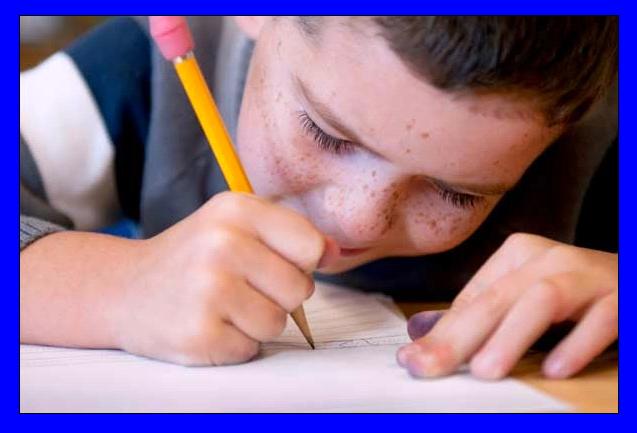- 30 years experience in the field of Special Education
What is Dysgraphia?
How to Continue Learning Over Summer Break
June 19, 2015How to Deal With Anxiety in Children
June 26, 2015Oftentimes I wonder about different learning disabilities especially these days. Are there more disabilities these days or are we just more educated and knowledgeable in catching them? Some people say that these days so many more learning disabilities happen because of the foods we eat, the TV we watch lack of exercise etc. I’m not necessarily 100% sure about that, but I do take a wide interest in these types of disabilities and like to learn even more about them. For example Dysgraphia. This is actually a learning disability and it affects a child’s ability to write or lack thereof to be honest. This is not necessarily something you can just give your child medication for or even change the way she or he eats and hope for the best, but there are ways to strengthen the inability to write or write with expression, help with spelling, assessing this form of a disability and more. If you continue to read below you will find information about all of these topics and a few references to understand Dysgraphia a little better as a parent or an adult with Dysgraphia.
What Exactly Is Dysgraphia?
Dysgraphia is actually a Greek word. The beginning of this word Dys means to be impaired and the last part of the word Graphia means writing by hand. This is a learning disability where the impaired condition is writing by hand. Even though we live in a world of technology and a lot of things are done by technological items, in school we very rarely bring technology into things like reading and writing. Instead, kids are taught how to write by hand. Because of this it’s easier to spot someone with Dysgraphia than someone who does not have it because kids in school are constantly writing by hand; in their notebooks, on the chalkboard, doing tests and quizzes, etc. When it comes to Dysgraphia in children there is no pre-determined impairment; some kids have issues with hand writing AND spelling whereas some other children have issues with just handwriting on its own and have no issues with spelling.
What Causes Dysgraphia?
A lot of research has been done on Dysgraphia and it’s said that it has to deal with one of two things; orthographic coding or planning sequential finger movements. Orthographic coding has to deal with working memory and the ability or inability to store words in a child’s working memory. Planning sequential finger movements has to do with two different things; trying to remember what letters are shaped like or having to do with visual feedback – if you can touch your thumb to your index finger, middle finger, ring finger and pinky finger without being asked to do so in order – you probably don’t have Dysgraphia because kids with Dysgraphia usually cannot do this. A little more about orthographic coding from Wikipedia: “Orthography is the methodology of writing a language. It includes rules of spelling, hyphenation, capitalization, word breaks, emphasis, and punctuation. Most significant languages in the modern era are written down, and for most such languages a standard orthography has developed, often based on a standard variety of the language, and thus exhibiting less dialect variation than the spoken language.”
What Can I Do To Help With Dysgraphia?
There are all sorts of instructional activities you can do with your kids when they are home, as well as a top special Ed teacher in New Jersey can do with them in school. Usually children with Dysgraphia benefit from hand writing to forming letters to even motor control. Here are a few activities you or your child’s teacher may be or should be considering:
Playing with clay or play dough: This helps to strengthen the muscles, tendons and bones in the hand
Coloring inside the lines or keeping lines within a maze: This helps to increase motor control and motor skills
Tracing a pencil eraser against a list of letters or numbers
Playing connect the dots to create letters
Etc.
Identifying Dysgraphia
Sadly when it comes to public schools teachers often don’t catch Dysgraphia. They think that if a child can’t write by hand that they are either lazy or they have lack of motivation to do so. But, unfortunately sometimes this just isn’t the case which is probably why Dysgraphia doesn’t get caught as often as parents would like. However, if your child has a teacher that has been complaining about laziness or lack of activity when it comes to writing, this might be your own queue to have them tested to see if they have Dysgraphia or not. If they don’t then you might need to find another way to motivate them or make writing more fun for them. If they do have Dysgraphia it might be a better idea to either get a private tutor or better yet see if you have any special educators or schools in your local area.

